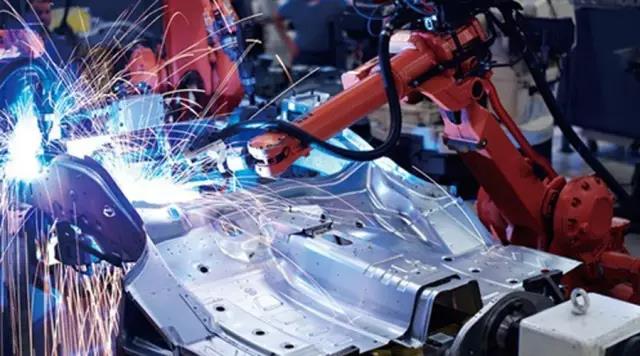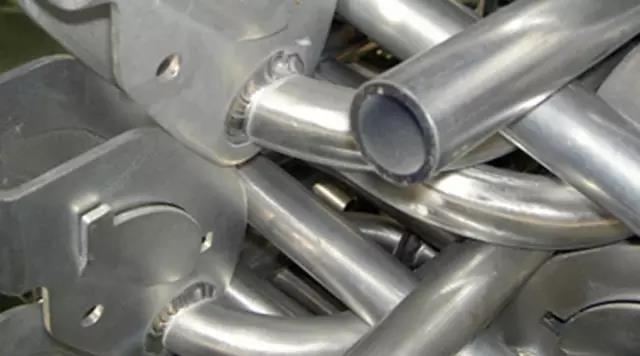11, 2019
by Oree Laser
Aluminum alloy welding technology
Aluminum alloy has high specific strength, high fatigue strength, good fracture toughness, and low crack growth rate, and also has excellent forming processability and good corrosion resistance. It has been used extensively in the aerospace, automotive, machine building, marine and chemical industries. The wide application of aluminum alloy promotes the development of aluminum alloy welding technology, and the development of welding technology has expanded the application field of aluminum alloy.
However, the characteristics of the aluminum alloy itself make its related welding technology face some urgent problems to be solved: The surface is refractory to the oxide film, the joint is softened, the pores are easily generated, the heat is easily deformed, and the thermal conductivity is too large. Conventional aluminum alloy welding generally adopts the TIG welding or MIG welding process. Although these two welding methods have high energy density and can obtain good joints when welding aluminum alloy, but there are still poor penetration, welding deformation, and low production efficiency, so people began to seek now welding methods, and laser technology gradually began to be applied to industry in the middle and late 20th century. The Airbus A340 aircraft body produced by the European Airbus company replaced the original riveting process with laser welding technology, which reduced the weight of the fuselage by about 18% and reduced the manufacturing cost by nearly 25%. German’s Audi A2 and A8 all-aluminum structure cars also benefit from the development and application of aluminum alloy laser welding technology. These successful examples have greatly promoted the research on laser-welded aluminum alloys, which have become the main development direction of aluminum alloy welding technology in the future. Laser welding has the advantages of high power density, low welding heat input, small welding heat affected zone and small welding deformation, which makes it pay special attention in the field of aluminum alloy welding.

Problems and countermeasures of aluminum alloy laser welding
● High reflectivity and high thermal conductivity of aluminum alloy surfaces
This can be explained by the microstructure of the aluminum alloy. Due to the presence of high-density free electrons in the aluminum alloy, the free electrons are forced to vibrate by the laser (strong electromagnetic waves) to generate secondary electromagnetic waves, resulting in strong reflected waves and weaker transmitted waves, so the surface of the aluminum alloy has a high reflectance and a small adsorption rate for the laser. At the same time, the Brownian motion of free electrons becomes more violent when stimulated, so the aluminum alloy also has a high thermal conductivity.
Aiming at the high reflectivity of aluminum alloy on laser, a lot of research has been done at home and abroad. The test results show that the proper surface pretreatment such as sandblasting, sanding, surface chemical etching, surface plating, graphite coating, and air furnace oxidation can reduce the beam reflection and effectively increase the absorption of the beam energy by the aluminum alloy. Besides, from the aspect of welding structure design, manually making holes in the surface of aluminum alloy or using joint in the form of light collector, opening V-shaped grooves or using seam welding(splicing gas is equivalent to manual hole making) can increase the absorption of aluminum alloy to the laser, and obtain a larger melting depth. Besides, a reasonable design of welding gas can be used to increase the absorption of laser energy on laser energy.
● Important factors affecting the laser welding of aluminum alloy
In the laser welding process of aluminum alloy, the appearance of small holes can greatly improve the absorption rate of the material to the laser, while the aluminum element and the Mg, Zn, and Li in the aluminum alloy have a low boiling point, easy to evaporate and large steam pressure. Although this contributes to the formation of small holes, the cooling effect of the plasma(the shielding and absorption of energy by the plasma reduces the energy input of the laser to the base material) causes the plasma itself to “overheat” but hinders the continuous existence of small holes. It is easy to produce welding defects such as pores, which affect the mechanical properties of welding forming and joint. Therefore, the induction and stabilization of the small holes become a key point to ensure the quality of laser welding.
Due to the high reflectivity and high thermal conductivity of aluminum alloys, it is necessary to have a higher energy density of the laser to induce the formation of small holes. Since the energy density threshold is essentially controlled by its alloy composition, a stable welding process can be obtained by controlling the process parameters and selecting the laser power to ensure suitable heat input. Also, the energy density threshold is affected to some extent by the type of shielding gas. For example, when laser welding aluminum alloy, it is easier to induce small holes when using N2 gas, while small holes can not be induced by using He gas. This is because an exothermic reaction can occur between N2 and AI, and the resulting Al-N-O ternary compound increases the laser absorption rate.
● Stomata problem
Different types of aluminum alloys produce different types of pores. It is generally believed that aluminum alloys produce the following types of pores during the welding process.
(1) Hydrogen hole. When the aluminum alloy is melted in a hydrogen atmosphere, the internal hydrogen content thereof can reach 0.69ml/100g or more. However, after solidification, the hydrogen-dissolving ability in the equilibrium state is only 0.036ml/100g at most, the difference is nearly 20 times. Therefore, during the transition from liquid to solid, excess hydrogen in the liquid aluminum must be separated. If the precipitated hydrogen cannot float up smoothly, it will accumulate bubbles and remain in the solid aluminum alloy to become pores.
(2) Pores produced by protective gas. In the process of high-energy laser welding of aluminum alloy, due to the strong evaporation of the metal at the front of the small hole at the bottom of the molten pool, the shielding gas is drawn into the molten pool to form bubbles, which becomes pores when the bubbles do not reach out and remain in the solid aluminum alloy.
(3) The pores produced by the collapse of the small holes. In the laser welding process, when the surface tension is greater than the vapor pressure, the small holes will not be able to maintain stability and collapse, and the metal formed holes before it could be filled. There are also many practical measures to reduce or avoid the porosity defects in aluminum alloy laser welding, such as adjusting the laser power waveform, reducing the unstable collapse of the small holes, changing the beam focus height and oblique illumination, applying electromagnetic field action during the welding process, and welding in a vacuum. In recent years, there has been a process of using filler wire or preset alloy powder, composite heat source and double focus technology to reduce the generation of pores, which has a good effect.
● The crack problem
Aluminum alloys are typical eutectic alloys, which are more likely to produce thermal cracking under the rapid solidification of laser welding. The formation of low-melting eutectic such as AL-Si or Mg-Si at the columnar grain boundary during weld metal crystallization is the cause of cracks. To reduce thermal cracking, laser welding can be carried out by filling wire or presetting alloy power. Controlling the heat input also reduces crystal cracking by adjusting the laser waveform.

The development prospect of aluminum alloy laser welding
The most attractive feature of aluminum alloy laser welding is its high efficiency, and to make full use of this high efficiency is to apply it to large thickness deep-fusion welding. Therefore, it is an inevitable trend of future development to study and use high-power lasers for deep welding with large thickness.
Improving the stability of the laser welding process and improving the quality of welding are the goals pursued by people. Therefore, new technologies such as laser-arc composite process, wire laser welding, preset powder laser welding, dual focus technology, and beam shaping will be further improved and developed.
Professional Laser Cutting Machine Manufacturer - OreeLaser